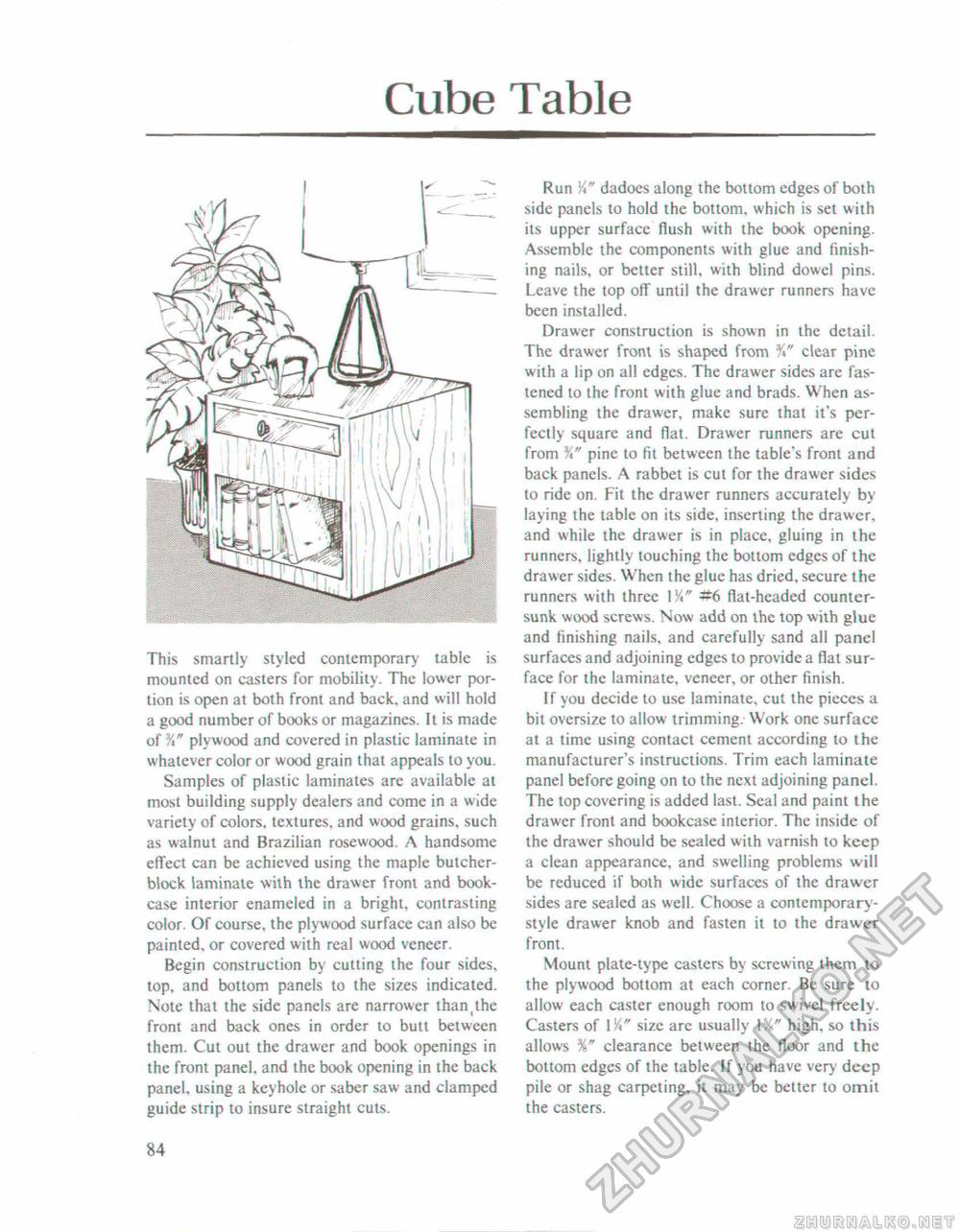Woodworker's Journal 101-Projects-for-Woodworkers, страница 91
Cube TableThis smartly styled contemporary table is mounted on casters for mobility. The lower portion is open at both front and back, and will hold a good number of books or magazines. It is made of V plywood and covered in plastic laminate in whatever color or wood grain that appeals to you. Samples of plastic laminates are available at most building supply dealers and come in a wide variety of colors, textures, and wood grains, such as walnut and Brazilian rosewood. A handsome effect can be achieved using the maple butcher-block laminate with the drawer front and bookcase interior enameled in a bright, contrasting color. Of course, the plywood surface can also be painted, or covered with real wood veneer. Begin construction by cutting the four sides, top, and bottom panels to the sizes indicated. Note that the side panels are narrower than thc front and back ones in order to butt between them. Cut out the drawer and book openings in the front panel, and the book opening in the back panel, using a keyhole or saber saw and damped guide strip to insure straight cuts. Run Ya" dadoes along the bottom edges of both side panels to hold the bottom, which is set with its upper surface flush with the book opening. Assemble the components with glue and finishing nails, or better still, with blind dowel pins. Leave the top off until the drawer runners have been installed. Drawer construction is shown in the detail. The drawer front is shaped from %" clear pine with a lip on all edges. The drawer sides are fastened to the front with glue and brads. When assembling the drawer, make sure that it's perfectly square and flat. Drawer runners are cut from %" pine to fit between the table's front and back panels. A rabbet is cut for the drawer sides to ride on. Fit the drawer runners accurately by laying the table on its side, inserting the drawer, and while the drawer is in place, gluing in the runners, lightly touching the bottom edges of the drawer sides. When the glue has dried, secure the runners with three IK" flat-headed countersunk wood screws. Now add on the top with glue and finishing nails, and carefully sand all panel surfaces and adjoining edges to provide a flat surface for the laminate, veneer, or other finish. If you decide to use laminate, cut the pieces a bit oversize to allow trimming. Work one surface at a time using contact cement according to the manufacturer's instructions. Trim each laminate panel before going on to the next adjoining panel The top covering is added last. Seal and paint the drawer front and bookcase interior. The inside of the drawer should be sealed with varnish to keep a clean appearance, and swelling problems will be reduced if both wide surfaces of the drawer sides are sealed as well. Choose a contemporary-style drawer knob and fasten it to the drawer front. Mount plate-type casters by screwing them to the plywood bottom at each corner. Be sure to allow each caster enough room to swivel freely. Casters of I Y<" size arc usually high, so this allows clearance between the floor and the bottom edges of the table. If you have very deep pile or shag carpeting, it may be belter to omit the casters. 84 |








